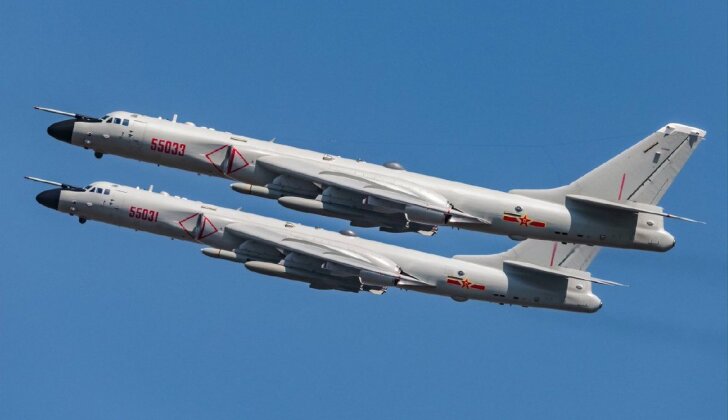
While China flaunts its cutting-edge J-35 stealth fighter, a less glamorous but equally potent weapon lurks within its arsenal: the H-6 bomber. A modernized version of a Cold War-era Soviet design, the H-6 has become a cornerstone of China’s evolving military strategy, playing a prominent role in recent exercises around Taiwan and showcasing Beijing’s growing long-range strike capabilities.
Taiwan War Games Highlight H-6’s Role
During the Joint-Sword 2024B exercises in October, the H-6 bomber took center stage. Taiwan’s Ministry of National Defense reported detecting multiple groups of H-6s engaging in simulated attack drills, underscoring the bomber’s significance in China’s military posture towards the island. These exercises, involving a substantial deployment of aircraft, naval vessels, and missile forces, served as a “stern warning” against Taiwanese independence, according to the Chinese military. While Taiwan responded by activating its surveillance and defense systems, the H-6’s presence highlighted the potential threat it poses.
Modernization Transforms a Cold War Workhorse
Originally based on the Soviet Tu-16 “Badger,” the H-6 has undergone significant modernization. No longer a simple bomber, some variants are equipped to launch nuclear-capable ballistic missiles, while others carry an array of anti-ship and land-attack missiles. Crucially, some versions possess in-flight refueling capabilities, extending their range deep into the Western Pacific, placing U.S. bases on Guam and elsewhere within striking distance. This reach directly challenges U.S. influence in the region and raises concerns about China’s expanding power projection.
A Growing Threat to Regional Stability
Echoes of the B-52: A Strategic Parallel
Interestingly, China’s continued reliance on and modernization of the H-6 mirrors the U.S. Air Force’s enduring use of the B-52 Stratofortress, another Cold War-era bomber. While the U.S. ceased B-52 production decades ago, China continues to refine and deploy the H-6, demonstrating its commitment to this platform. Much like the B-52’s role in projecting American power, the H-6 is increasingly utilized by China in long-range patrols, signaling its expanding reach and capability to strike distant targets. This parallel highlights a shared understanding of the strategic value of long-range bombers, even in an era of advanced fighter jets and missile technology.
Expanding Operational Footprint
The H-6’s growing operational footprint extends beyond the Taiwan Strait and the South China Sea. In a noteworthy incident in July, H-6 bombers, accompanied by Russian Tu-95s, flew near Alaska, marking the first time Chinese bombers had operated so close to the U.S. mainland. While officially described as a joint patrol to enhance coordination between the Chinese and Russian air forces, the incident underscored China’s increasing military confidence and its willingness to project power far from its shores. The event prompted a response from the North American Aerospace Defense Command (NORAD), highlighting the strategic implications of the H-6’s extended range.
Neutralizing the Threat: A Focus on Preemptive Action
Experts like retired U.S. Air Force Lieutenant General David Deptula emphasize the importance of neutralizing the H-6 threat before these bombers can take off. Targeting these aircraft on the ground is seen as a crucial element of any effective war plan, aiming to mitigate the significant danger they pose once airborne. This preemptive approach underscores the H-6’s recognized potential to disrupt operations and inflict damage if allowed to execute its mission.
The H-6 bomber, once a relic of the Cold War, has emerged as a key component of China’s modern military strategy. Its evolving capabilities, coupled with its expanding operational range, pose a significant challenge to regional stability and highlight China’s growing military assertiveness. While the world’s attention often focuses on newer, more technologically advanced weapons systems, the H-6 serves as a potent reminder that modernized legacy platforms can still play a crucial and potentially destabilizing role in the 21st-century security landscape.
